Australia So Much to See
Greenbushes, Western Australia - Talison Lithium Mining
Photo above left of equipment working in the Spodumene mine, and above right of charges laid ready for blasting.
Talison Lithium
is not a public company, and is currently owned by Chinas Tianqi Lithium and Albemarle Corp of the US.
Talison Lithium only has mining rights to mine Lithium, with other minerals being recovered as by-products. Rights are renewed for five year periods.
Global Advance Metals process the Tantalum and Tin recovered at their Greenbushes processing facility. Global
Advance Metals is one of only two tin producers in Australia and the Greenbushes tin smelter is the only one in Western Australia.
It produces tin metal cast into 17.5 kilogramme ingots for sale in Australia and internationally.
Spodumene is the Lithium ore mined at Greenbushes, and Greenbushes has the largest deposits of Spodumene in the world. Lithium is the lightest of all metals.
In the past, major uses were in glass, ceramics, tiles and fibreglass and other minor uses. Now the major use of Lithium
is in batteries, and this is still a rapidly growing market.



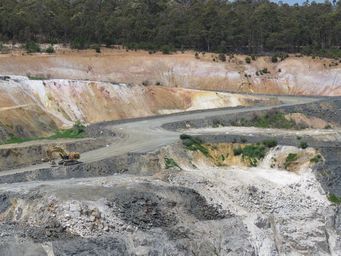

While there is a public viewing area over the Cornwall Pit, where Tantalum was mined, we saw the put from within the mine site, and
the adjacent Spodumene open cut mining operations currently taking place.
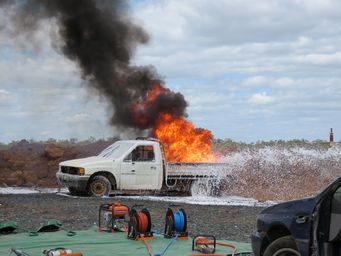


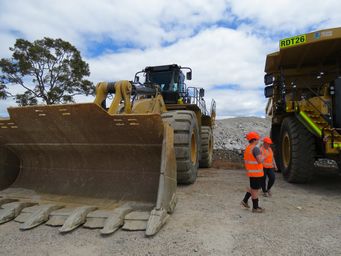
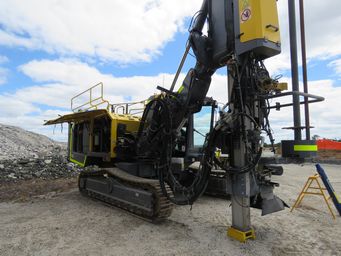
A dump truck, drilling rig and earth mover were on display, with staff on hand to answer questions.
Talisons emergency services were demonstrated, with a fire on a vehicle being extinguished by one of their fire trucks. Paramedics
also displayed an on-site ambulance.


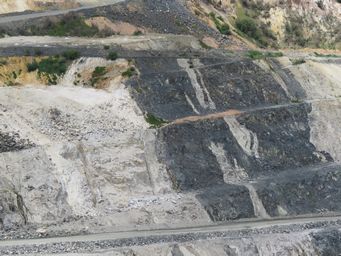
Our tour took us past former (Tantalum) and present (Spodumene) processing plants. There are currently three processing plants
operating; the technical grade plant which is used in the glass and ceramics industries, and two chemical grade plants, for the Lithium
battery market. The second of these, built with a costing of $320 million, was completed a month ago, and, as at 12th October
2019, was only officially opened a week ago, with production only just commenced. A third chemical grade processing plant is
being commenced.
With a world market share of 27%, the largest in the world, expansion now under way will double the output
of this mine, and will increase further when the next stage is built and commissioned. In 2018 720,000 tonnes of Spodumene concentrate
was produced.
The first chemical grade plant produces 600,000 to 700,000 tonnes of Spodumene concentrate. When the
second is in full productions, the total will be 1.3 million tonnes.
For every tonne of Spodumene concentrate recovered,
two tonnes of waste are created.
All mineral concentrates are presently trucked to Bunbury and exported for further processing, however on-processing plants are currently
planned to be built in Kwinana and later in Kemerton.
At Greenbushes, the only source of water is rain run-off, for water hungry processes, regardless on the mineral of the era. From the
tin mining days, tin recovery involves sluicing in water. Now, water will be becoming more precious as the rainfall in the region
is reducing, and with the mine undergoing yet another expansion.
Water is recovered from the tailing dams and recycled to the
drawing dams. The recovered water has not had any unsatisfactory levels of mineral residue from the tests conducted.
The
next stage will be a reverse osmosis plant to ensure non-contaminated water.
Various minerals have been mined to meet the markets at that time, commencing with tin. By the time tin mining was halted in the 1950s,
the focus had switched to Tantalum, production of which began from open cuts in the 1940s. In 1980, Greenbushes Tin Ltd found
major deposits of spodumene, the lithium-bearing ore, after sinking an underground decline while exploring for Tantalum. The
Cornwall Pit, which can be viewed from a public lookout, is no longer used, and the Tantalum processing plant lies idle. Lithium
production first began in 1983.
By the time tin mining was halted in the 1950s, the focus had switched to tantalum, production
of which began from open cuts in the 1940s to fill demand triggered by World War II.
In 1980, Greenbushes Tin Ltd found major
deposits of spodumene, the lithium-bearing ore, after sinking an underground decline while exploring for tantalum. Lithium production
began in 1983.
Most of the land surrounding Greenbushes has been mined over the past 130 years. Regrowth forest covered
reclaimed land disturbed by former mining operations, and former open pits have filled with run-off rain water to create large dams.